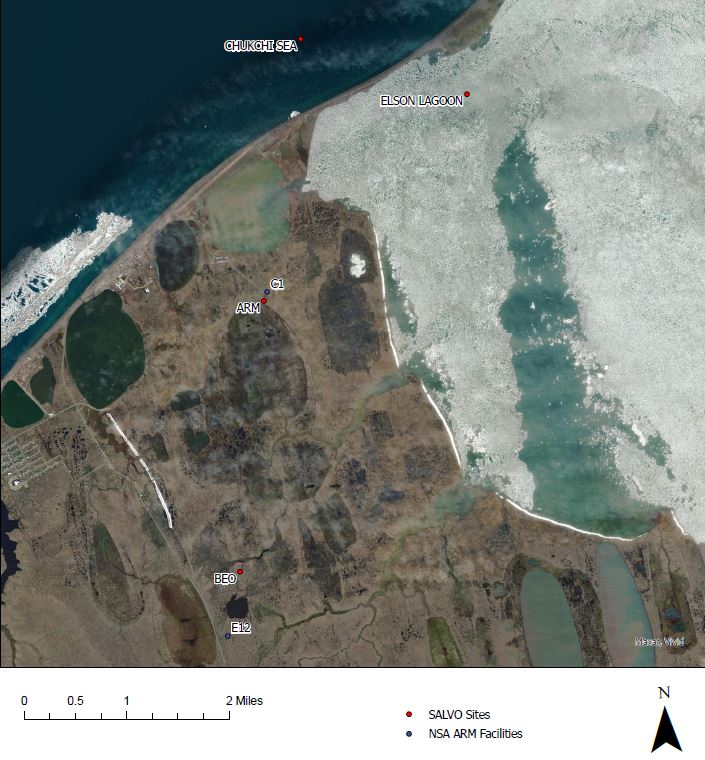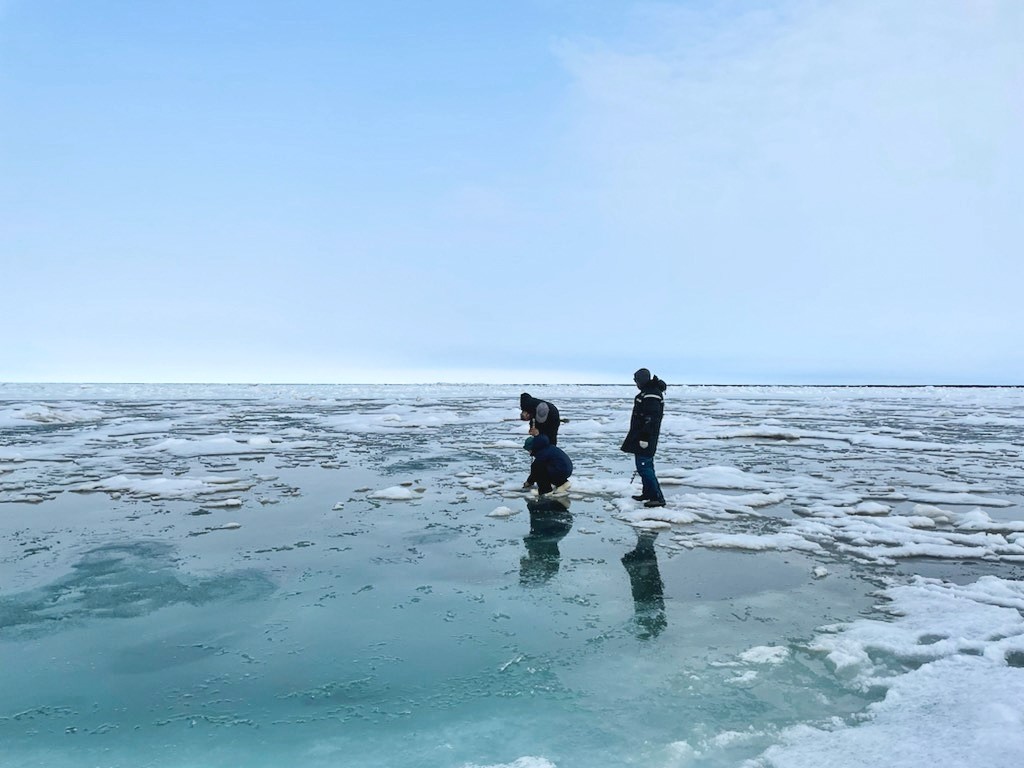Utqiaġvik, Where There Was Still Snow in June
Published: 31 August 2022
ARM snow albedo campaign resumes in Alaska after pandemic postponement
This is an updated version of a story by Serina Wesen, University of Alaska Fairbanks (UAF).

A group of UAF faculty, students, and staff began fieldwork in Utqiaġvik, Alaska, in mid-April 2022 to measure snowmelt, but the melt only started in mid-June.
This was an exceptionally late melt year.
The Snow ALbedo eVOlution (SALVO) field campaign team worked hard through the midnight sun, which provides nonstop sunlight to Utqiaġvik from May to August.
Team members included Jennifer Delamere, Matthew Sturm, Melinda Webster, Anika Pinzner, Phillip Wilson, Ema Mayo, Serina Wesen, Hannah Chapman-Dutton, and Owen Larson, all affiliated with UAF. The group also included David Clemens-Sewall from Dartmouth College and David Shean with the University of Washington.
“The goal of the project is to understand the mechanisms that control the speed with which the landscape clears of snow and therefore absorbs solar radiation,” said Sturm, group leader for the Snow, Ice, and Permafrost Group at the UAF Geophysical Institute.
SALVO is supported by the U.S. Department of Energy’s Atmospheric Radiation Measurement (ARM) user facility and Atmospheric System Research (ASR) program.
Initially, SALVO was scheduled to capture the 2019, 2020, and 2021 melt seasons. Researchers completed their 2019 fieldwork, but the COVID-19 pandemic pushed the final two field seasons to 2022 and 2023. Data analysis will continue into 2024.

Slow to Melt

The team began this year’s fieldwork in Utqiaġvik in mid-April to set up four snowmelt sites: two on sea ice and two on tundra. One site was coastal tundra at ARM’s North Slope of Alaska atmospheric observatory.
Initial premelt measurements from these sites will be compared with data from the melt.
The team returned to Utqiaġvik on May 15 and initially planned to leave June 15 based on when the snow melted in previous years.
The 2019 melt was mostly done around June 12, but this year’s melt started June 9 and finished around the June 21 summer solstice. Sturm stayed a few days longer to get the last measurements.
Melt ponds began forming on the sea ice, causing it to break up, but the group still carefully snow-machined to a Chukchi Sea study site.
Key activities included digging snow pits, measuring snow grain size, gathering basal snow temperatures and snow-water equivalent, measuring albedo (reflectivity) and incoming radiation, using GPS-enabled snow depth probes, photographing sites, taking snow samples to find impurities, and making terrestrial lidar scans.
The team was not alone in the Arctic, with polar bears, migratory birds, seals, caribou, and other arctic life keeping them company.
“By taking all of these measurements, we are trying to understand what drives the change from a completely white, snowy surface to much darker summer surfaces like tundra or sea-ice melt ponds,” Pinzner said.
Even though snowmelt occurred earlier in more recent years, this year’s late snowmelt was an anomaly related to a changing climate in the Arctic.
The team would like to recognize that SALVO research occurs on Iñupiat land and cannot be completed without the wisdom and generosity of the Utqiaġvik community.
Wesen is the education and outreach designer for the UAF Geophysical Institute’s Snow, Ice, and Permafrost Group. Read about Wesen’s experience on the SALVO team.
Keep up with the Atmospheric Observer
Updates on ARM news, events, and opportunities delivered to your inbox
ARM User Profile
ARM welcomes users from all institutions and nations. A free ARM user account is needed to access ARM data.


















